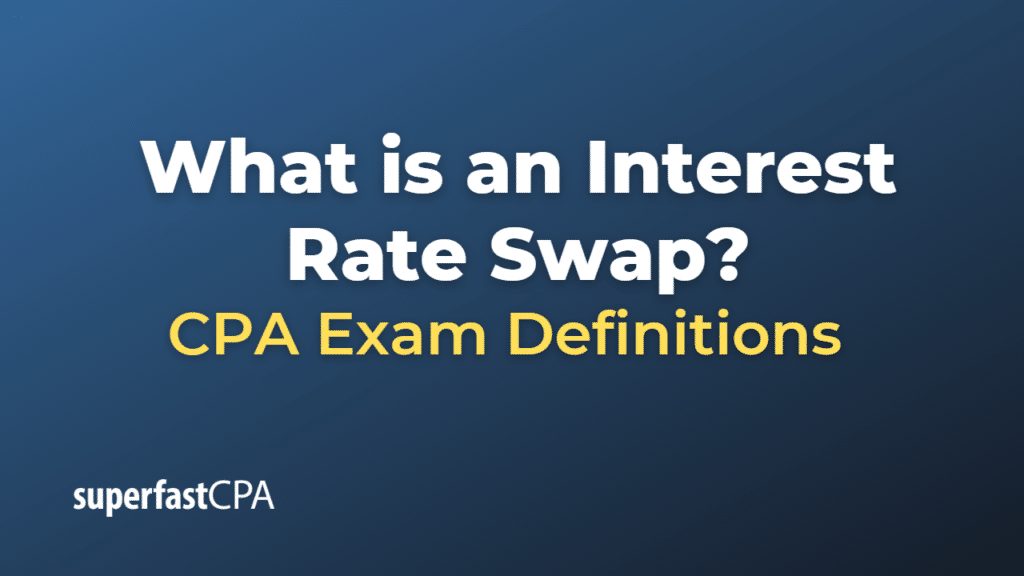Interest Rate Swap
An interest rate swap is a financial derivative contract in which two parties agree to exchange interest rate cash flows, based on a specified principal amount from a mutual starting point, for a fixed period of time. It’s a strategy used by companies, investors, and financial institutions to manage their exposure to fluctuations in interest rates.
In an interest rate swap, the principal amount, also known as the notional principal, is not actually exchanged between the counterparties. Instead, the cash flows based on this notional principal are what’s being swapped.
There are two primary types of interest rate swaps:
- Fixed-for-Floating Swap (or Plain Vanilla Swap): In this most common type of swap, one party agrees to pay a fixed interest rate, and in return, receives a floating interest rate tied to a reference rate (such as the LIBOR or SOFR). This kind of swap is useful for parties that want to change their exposure to interest rate fluctuations.
- Floating-for-Floating Swap (or Basis Swap): Both parties exchange floating interest rates with each other. These swaps are often used when parties have different accesses to market rates and can benefit from the other’s superior access.
Interest rate swaps can be beneficial to both parties, depending on their respective needs and market conditions. A party that is receiving a floating rate can benefit if interest rates decline. Conversely, a party that is receiving a fixed rate can benefit if interest rates rise.
However, like all financial derivatives, interest rate swaps can also involve considerable risk, including the risk that the counterparty will default on its obligations. Therefore, these types of transactions are typically undertaken by financial professionals who thoroughly understand the underlying risks and rewards.
Example of an Interest Rate Swap
Let’s consider a simple example of a fixed-for-floating interest rate swap, the most common type.
Suppose we have two companies: Company A and Company B.
Company A has a million loan that charges an annual interest of 5% fixed rate, while Company B has a $10 million loan with a floating interest rate that adjusts annually based on a benchmark such as LIBOR (London Interbank Offered Rate), currently at 4%.
Company A anticipates that interest rates will fall in the future and would like to benefit from these potential decreases. On the other hand, Company B is worried that interest rates will rise and wants to lock in a fixed rate now to protect against future increases.
Here’s where an interest rate swap comes in. Company A and Company B could enter into an interest rate swap agreement with the help of a financial intermediary (like a bank). In this agreement:
- Company A agrees to pay Company B the amount it would owe on its loan at the floating rate each year.
- Company B agrees to pay Company A the amount it would owe on its loan at the fixed rate each year.
So, essentially, Company A has converted its loan from a fixed interest rate to a floating rate, and Company B has converted its loan from a floating interest rate to a fixed rate.
Keep in mind, the actual principal amounts are never exchanged, just the interest payments.
The actual calculations and payments would be more complex, taking into account the time value of money and netting the payments against each other. But this example gives you a basic idea of how an interest rate swap works.
Interest rate swaps are sophisticated financial instruments. They require careful management and a solid understanding of the market conditions, as there’s a considerable amount of risk involved if the interest rate moves unfavorably.













